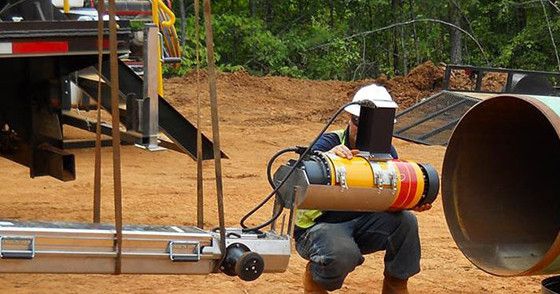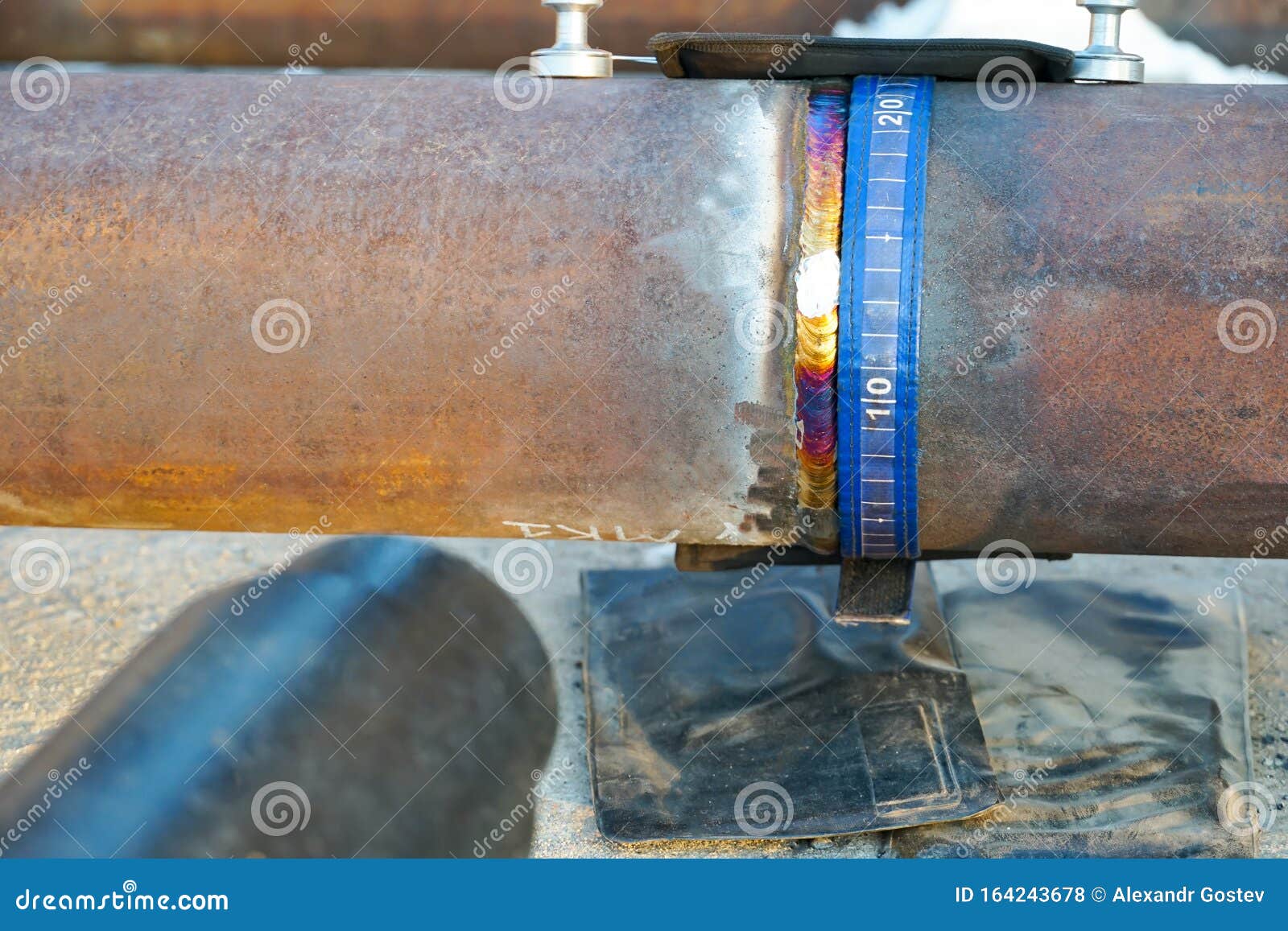Pipeline Welding Inspection: Ensuring Safety and Top Quality in Every Weld
Advanced Strategies in Pipe Welding Examination: Advancements and Technologies for Enhanced Precision and Dependability in Weld Assessment
The landscape of pipeline welding evaluation is undertaking a considerable change, driven by innovative methods that guarantee to enhance both precision and dependability in weld assessments. Technologies such as computerized assessment systems and advanced imaging modern technologies are redefining standard practices, while non-destructive testing methods make certain product integrity is maintained.

Relevance of Weld Assessment
Making certain the integrity of pipe welds is essential to the overall security and integrity of commercial systems. Welds work as the structural foundation of pipes, which transfer a range of liquids under varying stress. Issues in welding can cause devastating failures, leading to not only considerable financial losses yet additionally possible ecological calamities and threats to public safety. For that reason, rigorous inspection of welds is integral to the lifecycle of pipeline framework.
The significance of weld assessment prolongs beyond mere conformity with governing criteria. It acts as an aggressive action to recognize and rectify blemishes, such as incomplete fusion, porosity, or cracks, before they rise into severe problems. Reliable assessment methods also add to the durability of pipes, minimizing maintenance costs and improving operational performance.
Moreover, extensive weld inspections foster trust fund among stakeholders, consisting of regulative bodies, investors, and the areas served by these pipes. By guaranteeing that all welds meet the called for requirements, organizations can minimize dangers and support their online reputations. In recap, weld evaluation is important not only for functional integrity yet also for the wider implications it holds for security and ecological stewardship.
Automated Evaluation Solutions
The integration of automatic examination systems in pipeline welding has actually changed the method to making certain weld quality and stability. These systems use advanced robotics and expert system to perform assessments that are not just faster but likewise extra consistent than conventional techniques. Automated systems can cover considerable sizes of pipelines successfully, recording information that human assessors might neglect because of tiredness or ecological problems.
Among the key advantages of automatic assessment systems is their capability to run in unsafe settings, lowering the risk to human assessors. They make use of numerous non-destructive screening (NDT) strategies, such as ultrasonic screening and magnetic fragment assessment, to analyze weld honesty without jeopardizing the framework. The data collected is processed in real-time, permitting prompt responses and prompt restorative actions when defects are identified.
Furthermore, automated systems facilitate the standardization of inspection procedures, ensuring that each weld is reviewed versus constant standards. This not just boosts the dependability of results but additionally simplifies conformity with regulative standards. As sectors remain to focus on security and operational performance, the function of automated inspection systems in pipe welding will undoubtedly increase, leading the way for extra advanced quality guarantee approaches.
Advanced Imaging Technologies
Frequently used in contemporary pipe welding assessments, advanced imaging modern technologies have significantly improved the ability to identify and evaluate weld issues. Methods such as digital radiography, calculated tomography, and thermographic imaging offer inspectors with high-resolution photos that expose sub-surface flaws and architectural disparities that might be undetectable to the naked eye.
This leads to much faster assessments and boosted precision in identifying vital flaws. Calculated tomography, on the various other hand, offers three-dimensional imaging, enabling inspectors to visualize complicated geometries and examine the stability of welds from numerous angles.
Thermographic imaging uses infrared modern technology to identify variants in temperature, identifying areas of prospective weakness or tension within the weld. These advanced imaging modern technologies not just improve problem discovery prices but also decrease the time and resources required for pipe evaluations. Therefore, they play an essential role in maintaining pipe safety and security and reliability, making sure conformity with industry standards while minimizing operational threats.
Non-Destructive Examining Techniques
Utilizing different techniques, non-destructive testing (NDT) approaches are essential in pipe welding assessments, enabling the evaluation of weld honesty without jeopardizing the material's architectural stability. NDT encompasses a range of approaches, including ultrasonic screening (UT), radiographic testing (RT), magnetic particle screening (MT), and dye penetrant screening (PT) Each technique has distinct benefits and applications depending upon the specific needs of the evaluation.
Ultrasonic screening uses high-frequency acoustic waves to identify interior imperfections, giving precise dimensions of weld thickness and honesty. Pipeline Welding Inspection. Radiographic testing uses X-rays or gamma rays to create pictures of the weld, exposing click for info inner flaws that may not be visible externally. Magnetic fragment testing works for discovering surface and near-surface stoppages in ferromagnetic materials, while color penetrant screening highlights surface fractures by using a colored color
Incorporating these NDT techniques right into pipeline welding assessments enhances the accuracy and integrity of weld evaluations, making certain that potential failures are determined early. As industries demand higher requirements for safety and security and performance, the role of NDT in preserving the stability of bonded frameworks remains to be critical in pipe building and construction and upkeep.

Future Fads in Weld Analysis
As we want to the future of weld assessment, advancements in technology are positioned to reinvent the methods used for examining pipeline honesty. The combination of fabricated intelligence (AI) and artificial intelligence in evaluation procedures is anticipated to boost the accuracy of defect discovery and predictive upkeep. These technologies permit real-time data evaluation, enabling examiners to recognize potential problems prior redirected here to they escalate right into substantial problems.
In addition, the use of drones furnished with innovative imaging systems is acquiring grip. These airborne evaluations can cover substantial areas swiftly, recording high-resolution pictures and information that can be assessed for flaws in hard-to-reach locations. This not only boosts security however additionally enhances effectiveness in the examination procedure.
Additionally, the advancement of wise sensors embedded in pipeline systems provides the capacity for constant tracking. These sensing units can detect changes in stress, temperature level, and resonances, giving beneficial understandings right into the health and wellness of the welds gradually.

Verdict
To conclude, the combination of advanced techniques in pipeline welding evaluation substantially boosts the precision and integrity of weld evaluations. Advancements such as automatic inspection systems, progressed imaging innovations, and non-destructive testing methods play an essential duty in improving issue detection rates and cultivating positive maintenance approaches. As these modern technologies proceed to evolve, they will certainly better make certain the security and efficiency of pipe systems, eventually contributing to the stability of vital infrastructure.
